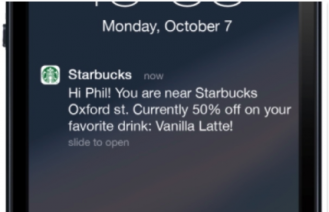Asking too much from Big Data Analytics, Digital Marketers Confuse Growth Strategy with Marketing Efficiency and Short-Term Clicks
Posted June 14, 2017
In the past decade, “big data analytics” (or “big data”) has grown dramatically in business. Big data can help develop and execute strategy—as in Google and Facebook’s ad businesses, and Amazon and Netflix’s recommendation engines. Seeing these huge tech successes, many decided to just emulate how big data is used, hoping that big data analytics alone can drive development of long-term growth strategy. This belief is a delusion.
Winning strategies require that businesses discover new or improved experiences that could be most valued (though unarticulated) by customers, and redesign their businesses to profitably deliver these experiences. Big data can increase communication efficiency and short-term sales, or “clicks”, but changing the most crucial customer experiences can transform behaviors, attitudes, and loyalty, leading to major growth. Such insight is best found in many businesses by in-depth exploration and analysis of individual customers—and cannot be found in the correlations of big data. Some questions are easiest answered with big data, but availability of data should not drive what questions to ask. Data-driven priorities can obscure fundamental strategic questions, e.g. what could customers gain by doing business with us—what value proposition should we deliver, and how?
Discovering such insights requires deeply understanding customers’ usage of relevant products or services. In some businesses, such as online retailers, customers’ buying-experiences constitute usage of the service, so these businesses do have usage data, and can use big data in developing strategy. For most, such as product producers, however, usage happens only after purchase, so they have purchase but not usage data, and cannot properly use big data to develop strategy. Feeling compelled to use big data, such businesses may use it anyway, on the data they have, which can help achieve short-term sales, but not to develop long-term growth strategy. However, these businesses still can— and must—develop insights into what usage experiences to focus on changing, and how.
Digital marketing now plays a major role in developing business strategy, and heavily uses big data. Big data predictive algorithms analyze customers’ past transactions and purchase or shopping behaviors, to increase the efficiency of matching customers with marketing offers, and strengthen short-term sales. Sustained major growth requires more than ratcheting reach-efficiency and tweaking the week-end promotional tally. Sustained growth requires creative exploration of customers’ current experiences, to discover breakthrough value propositions, and design ways to profitably provide and communicate them. This post and follow-ups discuss these concerns and suggest solutions.
Predicting transactions is not strategy
As illustration, a Customer Experience Management (CEM) system by Sitecore helps fictional apparel maker “Azure” (Sitecore’s name) use big data to customize marketing to individual customers. Here, Azure intervenes with consumer “Kim” on her decision journey. When she visits their site anonymously, the data shows her matching their active-mother profile. Clicking on a shoes ad, she signs up for email alerts, providing her name and email. Azure begins building her profile. They email a belts promotion to customers predicted by the data as potentially interested—Kim buys one. Later, real-time location data shows Kim near an Azure store, so CEM texts an in-store discount on a new boots line; Azure is confident she’ll like it based on her past actions. Scanning the coupon on Kim’s phone, the CEM enables the clerk to offer Kim another product, a child’s backpack, based on Kim’s profile. Kim is impressed—Azure understands her interests, tracking her every action. She joins Azure’s loyalty program, giving her sneak peeks at coming products. With data showing that Kim most often accesses the site by smart phone, Azure offers her their new mobile app. Via big data, Azure has improved the shopping and buying experiences, and efficiently stimulated short-term sales.
In applications of big data for marketing and growth-strategy, data scientists search for previously unknown correlations among customer transactional and behavioral data. For growth strategy, however, more understanding and creative thought is needed about why customers do what they do, what the consequential experiences have been, what is imperfect in these experiences, and how the business might cause these new or different experiences. These are typically unarticulated opportunities for improved customer experiences. Identifying them requires skilled observation and creative interpretation of current experiences—not replicable in most businesses by data collection and analytics. Such analysis, including customers’ product-usage behaviors, not just purchase, is crucial to developing value propositions that can generate major new growth.
Urging us to “Use big data to create value for customers, not just target them,” Niraj Dawar said in HBR that big data holds out big promises for marketers, including answers to “who buys what, when?” Marketers “trained their big data telescopes at a single point: predicting each customer’s next transaction,” in detailed portraits of consumers’ media preferences, shopping habits, and interests, revealing her next move.
In the Azure narrative, Azure is “pretty confident” of what Kim will want, where and when, based on understanding her interests and interactions. In addition to targeting, big data allows “personalizing”—using our knowledge and references to customers’ past purchases and interests, to make our marketing more relevant and thus more effective in winning that next short-term promotional sale. This saga, of Kim’s “well-guided shopping journey” with Azure, leaves Kim happy (though not entirely of her own free will). In this way, it is reminiscent of Minority Report’s mall scene. The novel and 2002 film focused on prediction (“precognition”) of crimes not yet committed (supernaturally foreseen by “PreCogs”). We can hope this premonition is only a dystopic nightmare, but marketers may find the film’s futuristic marketing a utopian dream. The marketing is precisely targeted and highly personalized—ads and holographic greeter automatically recognize and call out the character’s name, reminding him of a recent purchase.
Fifteen years ago, the sci-fi film’s marketing technology was showing us the future—ever increasingly accurate predictions of each customer’s next purchase. Big data is thus a kind of commercial precognition. Data scientists are PreCogs using big data, not supernatural powers. Both narratives are fictional, but illustrate the big data logic for marketing and growth-strategy. Able to predict the customer’s next transaction, the CEM produces targeted marketing, more efficient in customer-reach. Personalized marketing is more relevant, helping it stimulate short-term sales. A fundamental problem with this paradigm is that growth strategy needs more than accurate predictions of transactions. Such strategy must transform behaviors, attitudes and loyalty of customers and other players in the chain, based on insights about the causality underlying correlations.
Summary: Strategy is More than Prediction
Marketers are right to have yearned for much more factual data on what customers do, i.e. their behaviors. However, with big data it has been easy and commonplace to overemphasize customers’ behavior, especially as related to their buying process, without adequately understanding and analyzing the rest of their relevant experience. Businesses must understand customers’ usage experience, not just buying. They must also explore what’s imperfect about this experience, how it could be improved for the customer, what value proposition the business should deliver to them, and how. Such exploration must discover the most powerful, unarticulated customer-opportunities for greater value delivery, and redesign the business to profitably realize such opportunities. These traits are essential to how strategy is different from prediction—strategy must focus on what we want to make happen and how, not just what we might bet will happen.
Kim’s past transactional behavior is analyzed to predict what she’ll likely want next, but needs to be pushed further, to discover experiences and value propositions that could influence her, and yield long-term growth. (See a similar complaint about limitations of data, from Clayton Christensen et al.) Actions—including product and service improvements, and intense focus of marketing communications on customer benefits—must then be designed to optimally deliver these value propositions.
Growth of big data in tandem with digital marketing
IDC estimates global revenue for business data analytics will exceed $200B by 2020. As a recent review said, this expansion was enabled by several trends: continued rapid expansion of data, doubling every three years, from online digital platforms, mobile devices, and wireless sensors; huge capacity increases and cost reductions in data storage; and major advances in analytic capabilities including computing power and the evolution of sophisticated algorithms. Previously, “industry poured billions into factories and equipment; now the new leaders invest…in digital platforms, data, and analytical talent.” This investment expands the ability to predict the next short-term transaction, increase marketing-communications efficiency and promotional impact. It also drains resources needed for the more difficult but, as argued here, more strategically crucial exploration of customers’ usage experiences, and discovery of breakthrough-growth value propositions.
Using digital technology to market products and services, the digital marketing function has risen rapidly. Last year for the first time, US digital ad-spending surpassed TV, the traditional dominant giant. And digital marketing, both the source of most big data and the easiest place to apply it, increasingly leads development of business strategy.
Efficiency and relevance: important but usually much less so than effectiveness
More efficient marketing is desirable, but only if it’s effective, which is often taken for granted in the focus on efficiency. Much digital marketing faith is put in the four-part promise of “the right ad or offer, to the right person, at the right time, via the right place” (see here, and here). Most big data focus on the last three, which mostly enhance efficiency, instead of the “right ad” which determines effectiveness.
Hunger for efficiency also drives the focus on targeting. Personalizing, when possible and affordable, can also make customers more willing to hear the message, increasing efficiency—and possibly effectiveness—by its greater relevance.
However, effectiveness is the far more crucial issue. If a message does not credibly persuade customers, it is still of little use to the business, even if “efficient.” But targeting and personalizing marketing typically do not identify what behavioral attitudes to change, or how to change them. This more fundamental strategic goal requires deeper understanding of the unarticulated value to customers of improved experiences, and detailed creative exploration of the business’ potential to profitably cause these improvements.
Reinforcing the predominant near-term and efficiency focus of big data in digital marketing is the nature of online sources typically available for big data. McKinsey estimated that, “so much data comes from short-term behavior, such as signing up for brand-related news and promotions on a smartphone or buying a product on sale. That short-term effect typically comprises 10 to 20 percent of total sales, while the brand…accounts for the rest.” This short-term nature of the readily available data biases marketers to focus on short-term transactional results.
Location-based, real-time big data—another advance in short-term promotion
It seems worth noting here that location-based marketing excites the digital marketing world, seeing the “next big thing.” Below are examples, from Skyy Vodka and Starbucks:


As location data gets more accurate (problematic today) this approach will again improve promotional efficiency. In one illustrative test recounted in Ad Age, Brown-Forman, suppliers of Herradura tequila, teamed with Foursquare (a search-and-discovery mobile app that helps find “perfect places [food, entertainment, etc.]”). Foresquare used Brown-Forman’s list of accounts where Herradura is sold, to target mobile and other Herradura ads to consumers whose mobile was close (or had been in) shops, bars, or restaurants in the account list. They saw 23% increased visits to accounts, a positive signal.
Since big data was applied early by direct marketing companies, big data today (further illustrated above by advances in location-based marketing) works more like direct-response marketing than demand-generation. The problem, as noted earlier, is that businesses more than ever also need the latter—demand-generating activity, creating loyalty, thus behavioral changes resulting in long-term growth. Some businesses don’t need these luxuries, when cheap, automated big-data options—digital PreCogs—proliferate.
But most businesses do need to make these serious strategic investments, in addition to and complementary with big data analytics. Having digitally captured countless petabytes of data describing Kim’s every action of shopping and buying, the business managers now need to spend time with Kim learning about her usage of that apparel. What were her experiences before and during usage of those shoes, the belt, and other items? And what of her daughter’s experiences with the backpack? What was imperfect, what could some better experiences be, what would be an improved superior value proposition, and what would it take to provide and communicate that proposition effectively and profitably? These intensively customer-focused actions can enable the discovery and activation of powerful insights for profitably influencing customers’ (and others’) behavior, a key basis for generating profitable major growth over time.
* * *
As mentioned above, this blog series will expand on these concerns about the way that big data analytics has evolved for use in growth strategy, including digital marketing; and will expand on the above recommended solutions for marketers and businesses, including how these solutions apply to most businesses.


